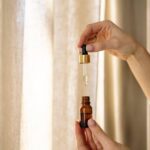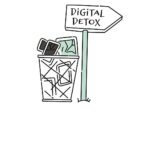In a world increasingly conscious of the ingredients we bring into our homes, making your own cleaning products offers a refreshing blend of simplicity and control. Beyond the bright labels and chemical jargon, homemade cleaners reveal a cleaner story-one where natural ingredients meet practicality, and sustainability quietly takes center stage. Whether you’re aiming to reduce your environmental footprint, save a few dollars, or simply enjoy the satisfaction of crafting something from scratch, the process is surprisingly straightforward. This article will guide you through the art and science of making effective, non-toxic cleaning solutions right from your kitchen, turning everyday materials into powerful allies in your quest for a spotless home.
Choosing Natural Ingredients for Effective Cleaning
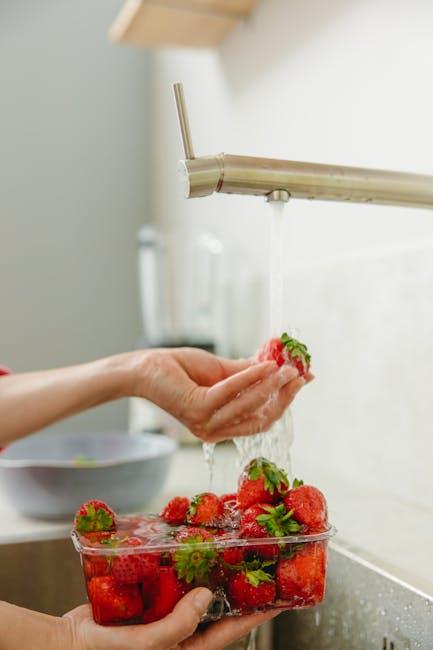
When selecting ingredients for homemade cleaning solutions, prioritizing natural components can lead to safer, effective results while minimizing environmental impact. Common household staples like white vinegar and baking soda offer powerful cleaning and deodorizing properties without harsh chemicals. Lemon juice, with its natural acidity and fresh scent, is excellent for breaking down grease and sanitizing surfaces, while castile soap acts as a gentle yet efficient cleanser suitable for multiple applications.
It’s important to understand the unique benefits of each natural ingredient to combine them thoughtfully in your formulations. Below is a handy guide to some of the most versatile natural cleaning agents:
| Ingredient | Primary Use | Key Benefit |
|---|---|---|
| White Vinegar | Disinfecting, degreasing | Breaks down mineral deposits and kills bacteria |
| Baking Soda | Deodorizing, scrubbing | Acts as a mild abrasive and neutralizes odors |
| Lemon Juice | Stain removal, freshening | Natural bleaching agent and antiseptic |
| Castile Soap | General cleaning | Biodegradable and gentle on surfaces |
Crafting All-Purpose Solutions for Every Room
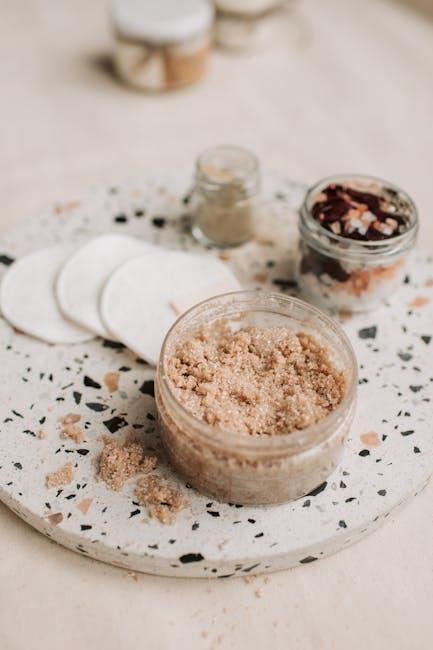
Harnessing the power of simple, natural ingredients to create cleaning solutions that adapt to various surfaces and spaces is both economical and eco-friendly. For instance, a mixture of white vinegar, water, and a few drops of essential oil can freshen up countertops, glass, and even bathroom tiles without the harsh chemicals. By customizing the ratios, you can easily adjust the solution’s strength, making it gentle enough for delicate materials yet effective for tougher grime. This versatility transforms everyday households items into potent allies against dirt, ensuring every room shines without the clutter of multiple products.
To help you navigate these multipurpose concoctions, here’s a quick guide to some common ingredients and their cleaning benefits:
| Ingredient | Best For | Key Benefit |
|---|---|---|
| Baking Soda | Deodorizing, scrubbing | Gentle abrasive, odor neutralizer |
| White Vinegar | Glass, countertops | Breaks down mineral deposits, disinfects |
| Lemon Juice | Stains, grease | Natural bleach, antibacterial |
| Castile Soap | General cleaning | Plant-based cleanser, gentle on skin |
| Essential Oils | Air freshening, antibacterial | Adds fragrance, boosts cleaning power |
Techniques for Safe Storage and Proper Labeling
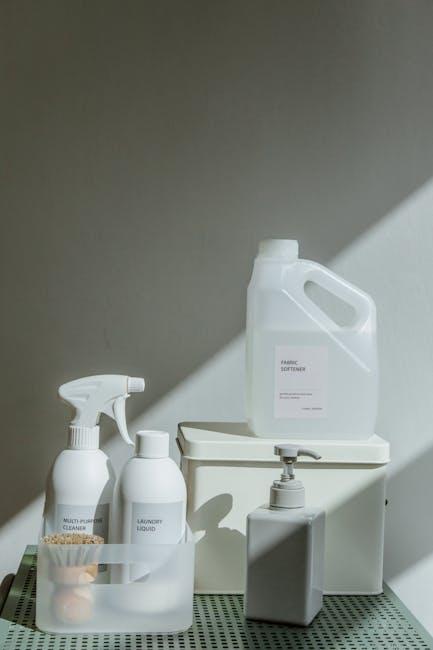
Storing your homemade cleaning products safely is essential to maintain their effectiveness and prevent accidents. Always use sturdy containers made from materials compatible with the ingredients, such as glass or high-density polyethylene (HDPE) plastic. Avoid reusing old food containers, as this can lead to dangerous mix-ups. Place your cleaning solutions in a cool, dry area away from direct sunlight and out of reach of children and pets. Utilize airtight lids to prevent spills and contamination, and consider using childproof caps for added safety.
Proper labeling can save you time and ensure safe usage. Clearly mark each container with the product’s name, ingredients, and date of creation using waterproof labels or permanent markers. Including precautionary notes like “Keep Away from Eyes” or “Do Not Ingest” can further reduce risks. For a quick reference, use a simple yet effective labeling system:
| Label Element | Info to Include |
|---|---|
| Product Name | Natural All-Purpose Cleaner |
| Ingredients | Vinegar, water, lemon oil |
| Date Made | April 15, 2024 |
| Safety Note | Keep out of reach of children |
- Color-code labels for quick identification (e.g., blue for glass cleaners, green for kitchen)
- Include basic usage instructions to avoid misuse
- Check and update labels regularly as ingredients or instructions change
Tips for Customizing Scents and Strengths at Home
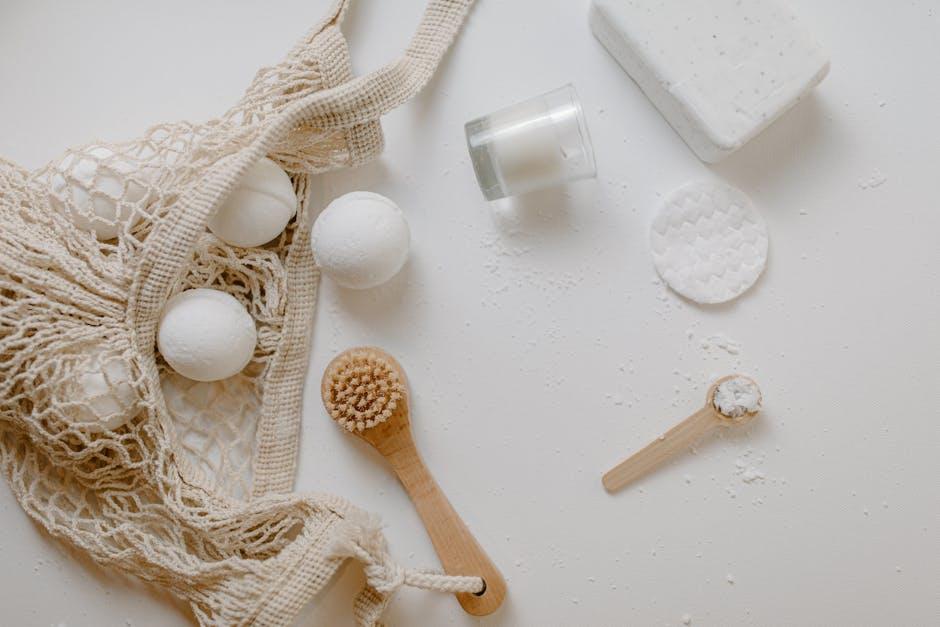
When crafting your own cleaning solutions, the fragrance you choose can transform a mundane chore into a sensory delight. Opt for essential oils like lavender or eucalyptus to infuse calming or invigorating notes. Start with just a few drops-it’s easier to add more than to dilute an overpowering scent. Consider combining complementary oils, such as lemon with rosemary, for a fresh yet earthy aroma. Remember, some oils also bring antibacterial and antifungal properties, enhancing both scent and function.
Adjusting the strength of your homemade cleaners is equally important for efficiency and safety. For everyday light cleaning, a mild dilution of vinegar or baking soda might suffice, but tougher stains demand a stronger concentration. Below is a handy guide to help you balance power and gentleness:
| Cleaning Task | Recommended Strength | Suggested Additions |
|---|---|---|
| Glass & Mirrors | 1:1 vinegar to water | 10 drops lemon essential oil |
| Heavy-Duty Grease | Undiluted baking soda paste | 5 drops tea tree oil |
| Floors & Surfaces | 1 cup vinegar per gallon water | 15 drops eucalyptus essential oil |
| Fabric Stains | 2 tbsp baking soda + water | 5 drops lavender essential oil |
Closing Remarks
Creating your own homemade cleaning products is more than just a cost-saving hack; it’s a small step toward a healthier home and a happier planet. With simple ingredients and a bit of ingenuity, you can replace harsh chemicals with effective, eco-friendly solutions that bring a fresh sense of satisfaction to your cleaning routine. So next time you reach for that bottle on the store shelf, remember: the power to clean naturally is already in your kitchen. Embrace the art of homemade cleaning, and let your home shine with the gentle touch of nature.


